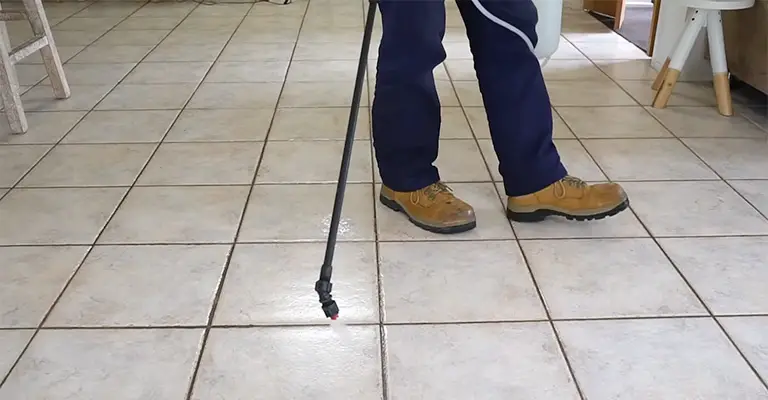Slippery floor tiles can be a real safety concern, especially in areas like bathrooms, kitchens, or entryways where water or spills are common.
Thankfully, there are several effective methods you can employ to increase the traction and reduce the risk of slips and falls on your tiled surfaces.
Tile floors come with both benefits and hazards, so you should read up on them before installing them in your home.
The good thing about tile floors is that they are much more durable than other types of flooring, but they are also very slippery, especially when wet. We can help you make tile floors less slippery if you are struggling with slick floors.
Treating Slippery Tiles
The first thing you should do is check to see if your cleaning products are making your tiles slippery. Tiles can become extremely slippery when soap residue is left on them.
Therefore, you should make sure that your floor is completely clean of soap residue. If you plan to clean again in the future, use less soap, or alternately, use plain water for the second mop.
You may want to consider larger changes if that doesn’t help your slippery floor:
- Put non-slip tiles on the floor
- Consider anti-slip floor treatments
- Make sure the treads and stickers are anti-slip
- Put non-slip mats on the tile floor
What Can I Put On Tile To Make It Less Slippery?
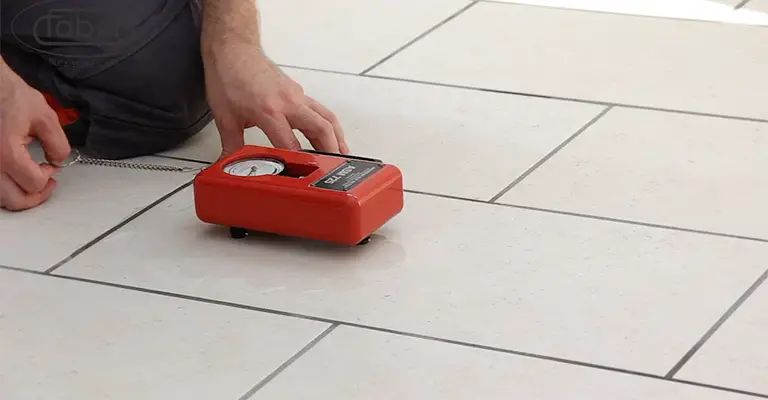
Try mopping your tiles with plain water or water mixed with vinegar if they are too slippery. Tiles can become very slippery if soap residue is left over from previous cleanings.
It may not be enough to use this method if your tiles are still slippery when they are dry. You might also consider applying an anti-slip treatment to the tile surface, adding some anti-slip treads, or adding some soft furnishings, such as a rug.
Use Anti-Slip Treads
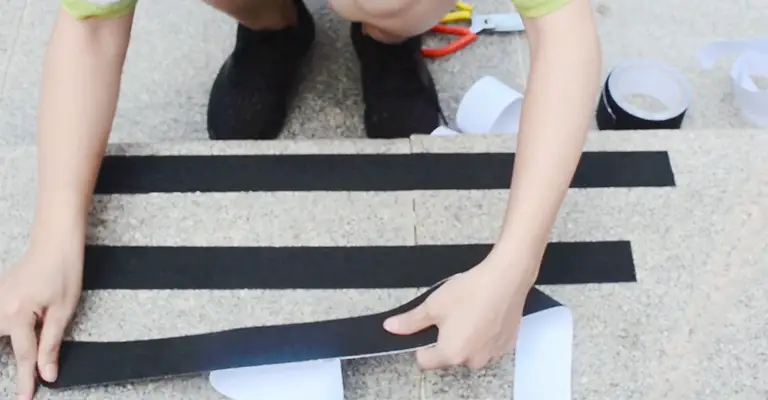
Despite not suiting the aesthetics of your home, an anti-slip tread sticker can ensure that slippery tiles are more secure in commercial environments.
You may want to consider installing non-slip treads on your stairs (or stickers). Similar to ceramic tiles in bathrooms and stairs, they can be used on smooth indoor surfaces.
In addition to being affordable, anti-slip treads provide excellent results without changing the original tiles’ surface.
If your decision changes and you want to try something different, you can save the surface from damage by removing them.
The downside of anti-slip treads is that they don’t last as long as non-slippery tile treatments, and they can begin to look tacky over time.
Moreover, they change the aesthetics of a room, and some people may dislike their appearance.
In general, anti-slip treads are readily available, but they should be chosen carefully because many are low-quality products that get loose quickly and do not stick properly.
Install Non-Slip Tile
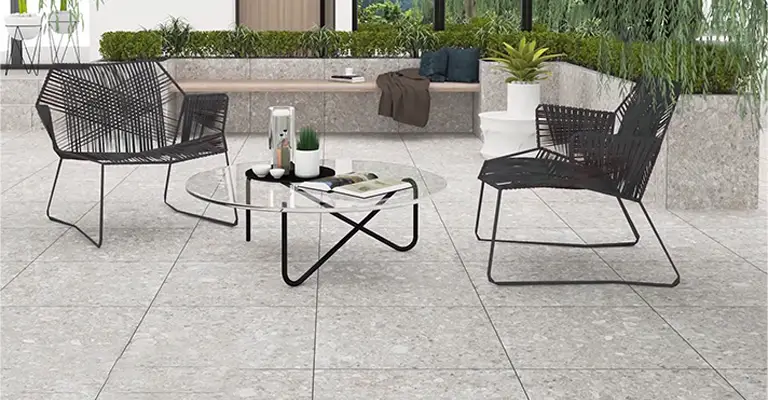
Tile floors can be made less slippery by replacing them in whole with non-slip tiles, which is not the solution you might expect.
In addition to being the most labor-intensive option, non-slip tile will preserve the look and feel of tile while eliminating slippage concerns.
Stone, for example, is naturally non-slip due to its textured surface, while some tiles are specifically designed to be slip-resistant.
You must completely redo your current flooring before you can install non-slip tile. Using this method is best suited to new constructions or home renovations due to its expense and effort.
Install a Floating Floor Over the Tile
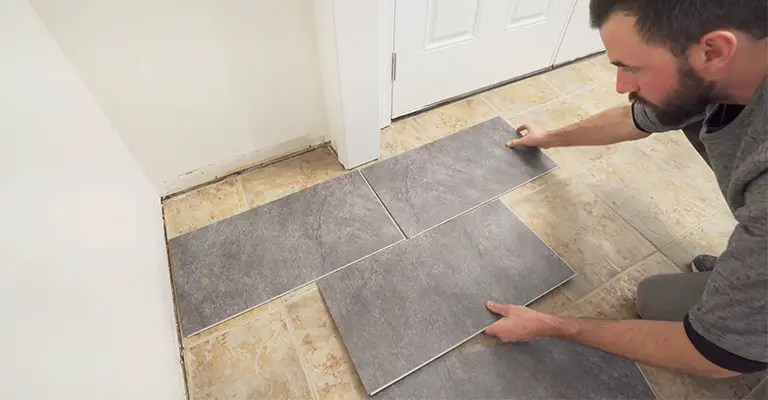
Tile flooring can be covered with a floating wood floor if you’re not too concerned about the overall appearance. According to your budget and preferences, you can purchase real wood flooring or laminate flooring.
Many homeowners feel that floating floors are the most aesthetically pleasing option, despite the fact that they are more labor-intensive than the other methods.
Floating floors have the disadvantage of being difficult to install and potentially damaging tiles underneath. You are probably not going to be happy with the results if you plan to go back to tile floors at some point.
Make sure the surface beneath the floating floor is completely smooth and free of damage before installing it. Over time, the flooring may shift or move out of place if it is not installed properly. Ensure that doors have enough clearance.
To eliminate slippery tile flooring, install a floating wood floor or laminate over your existing floor.
Apply an Anti-Slip Formula
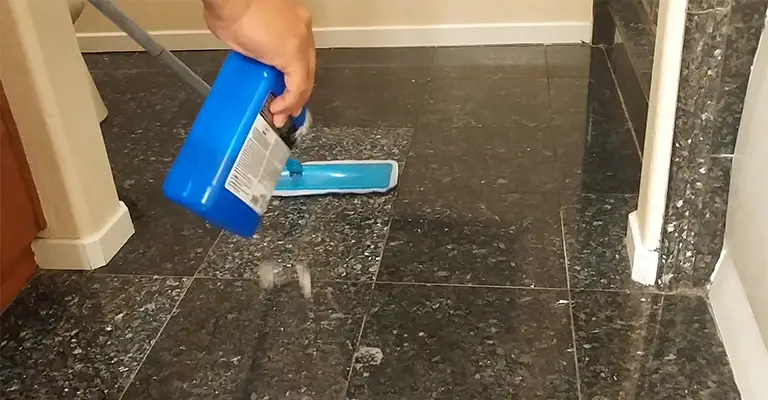
Applying an anti-slip formula to your tile floors will make them less slippery without altering their appearance.
In order to etch mineral-based tile flooring, these acid-etching formulas create “micro-treads” on its surface. By corroding the surface microscopically, they reduce the surface’s slipping properties when wet.
It won’t affect the tile’s appearance if you follow the manufacturer’s instructions and use the formula correctly. The formula can damage tiles if left on them for too long and dull their shine.
If you regularly brush your slip-free tile floor, you will increase the traction provided by the microscopic treads by agitating the surface with a stiff-bristled scrubbing tool.
It is relatively easy and very effective to apply an anti-slip formula, but there are two drawbacks.
To begin with, it’s a much more labor-intensive process than laying carpet, foam flooring, or adhesive treads. In addition to the prep time, application time, and cleanup time, this project requires some attention to detail.
The second reason is that anti-slip formulas contain harsh chemicals that corrode your tiles over time. You may damage your tiles if you don’t apply it correctly, even though it’s designed to create microscopic treads.
The sheen of tiles can be dulled by anti-slip solutions. Some homeowners claim that anti-slip solutions also dull the shine. You should follow the instructions carefully and test it on a small, less-visible area of your floor before applying it to the entire area.
Install Foam Flooring on Top of the Tile
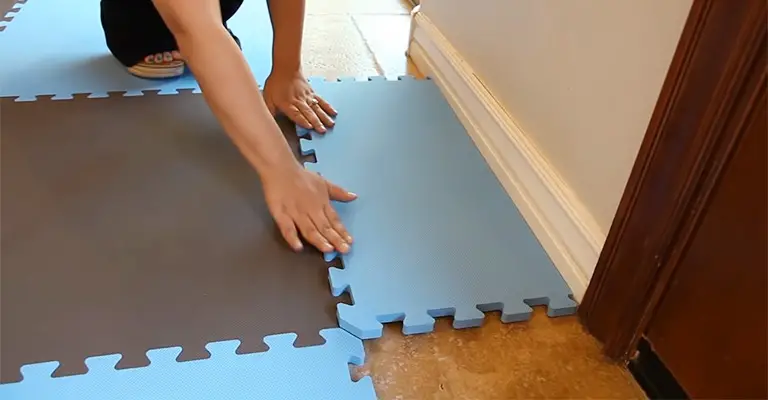
If you have a tiled room with a more utilitarian purpose, such as a playroom, mudroom, or workshop, foam flooring is an excellent solution.
Foam flooring is easy to install, relatively cheap, and can be completed in under an hour. Fit the interlocking grooves together by laying out the pieces on the floor.
Easily cleaned with soap and water, foam flooring is durable, moisture-resistant, and easy to maintain. It instantly gives your tile floors non-slip traction.
The most popular measurements for this kind of flooring are 12 x 12 inches, 18 x 18 inches, and 24 x 24 inches. A half-inch to two-inch thickness is also available.
You can find foam flooring that perfectly matches your home’s interior if you spend a little extra time and money.
For a playroom, there are options with bright colors and fun designs, such as foam flooring that looks like wood.
Using this method has the downside of making a room look like foam flooring forever; once it’s installed, it completely transforms the look of the room.
Rooms such as dining rooms, living rooms, kitchens, and bathrooms that are visible to the public are not suitable for this type of flooring.
The cracks can also get clogged with crumbs and small debris, making cleaning a bit of a chore.
Furthermore, this solution eliminates the slipperiness of the tile, but it creates a second hazard. You can trip over the foam edge if you’re not paying attention.
Use Rugs or Carpet Runners
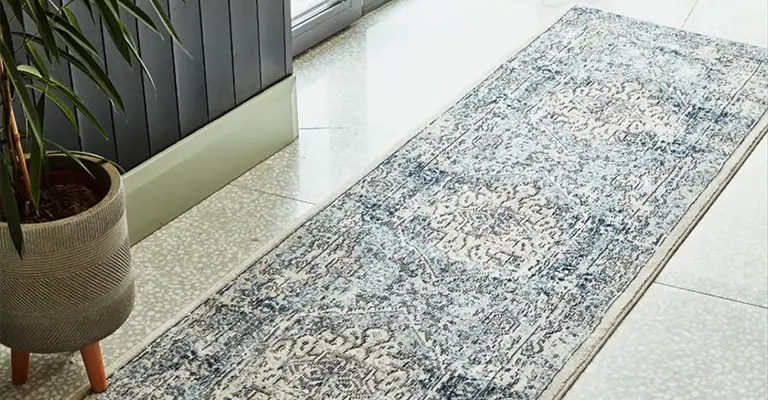
Place area rugs or carpet runners over your tile floor to make it less slippery. It’s the easiest method there is but not without drawbacks.
Suitable for areas near sinks, entryways, hallways, staircase bottoms, and large open rooms, this solution will enhance the appearance of any area. Rugs and carpet runners can also be presented as intentional design choices.
In addition to being inexpensive and easy to clean, small carpets and rugs come in a variety of styles.
As a result of using this method, you may encounter issues such as limited coverage provided by rugs and the need for an adhesive, such as double-sided tape or plastic matting, to prevent fabric slippage.
The problem cannot be solved completely by covering the entire tile floor with area rugs and carpet runners. This is a quick and inexpensive solution, however, if there’s one small area of your tile floor that gets particularly slippery.
Why Is My Tile Floor So Slippery?
Floors can get slippery for a variety of reasons, but the most common ones are:
- Soap Foam
- The use of excessive floor cleaners or waxes
- Dust or Powder
- Oil
- Unsuitable cleaning chemicals
- A moist environment
What Can I Put On Slippery Outdoor Tiles?
Natural stone tiles are a definitive solution for outdoor projects. Their solidity, beauty, and versatility are their most outstanding features.
When choosing the right style for your outdoor area, you have an extraordinary selection of natural stones to choose from.
Tiles made of stone can be used inside and outside for pretty much any project. They also create a timeless look that can’t be duplicated.
The use of natural stone tiles works well if you’re trying to create consistency between your indoor and outdoor decor layouts.
Additionally, most stones come in an array of colors, so you can choose your favorite stone and combine its subtleties with various finishings to achieve a blended appearance.
How Do I Make My Bathroom Floor Tiles Less Slippery?
Bathroom floors can sometimes be extremely slippery. To begin with, make sure all soap residue from the floor has been removed.
There are also other considerations in the bathroom, such as shampoo and soap, which can all contribute to slippery surfaces.
Tiles can also be treated with anti-slip treatments to make them less slippery, but if you need something truly basic, get a plastic safety rug.
A grippy tile in the bathroom may require a lot of effort to keep clean, as opposed to a smooth tile. Tiles can be made non-slip by using various products that are available without affecting their appearance.
The Bottom Line
Even on a tight budget, it’s possible to make a slippery tile floor safe. Make sure you choose non-slip rugs if you need to use rugs.
Use a hot glue gun to make your old rugs anti-slip or put non-slip pads under them. Making your bathroom and kitchen tile floors less dangerous is as easy as using mats that are securely attached to the floor.

